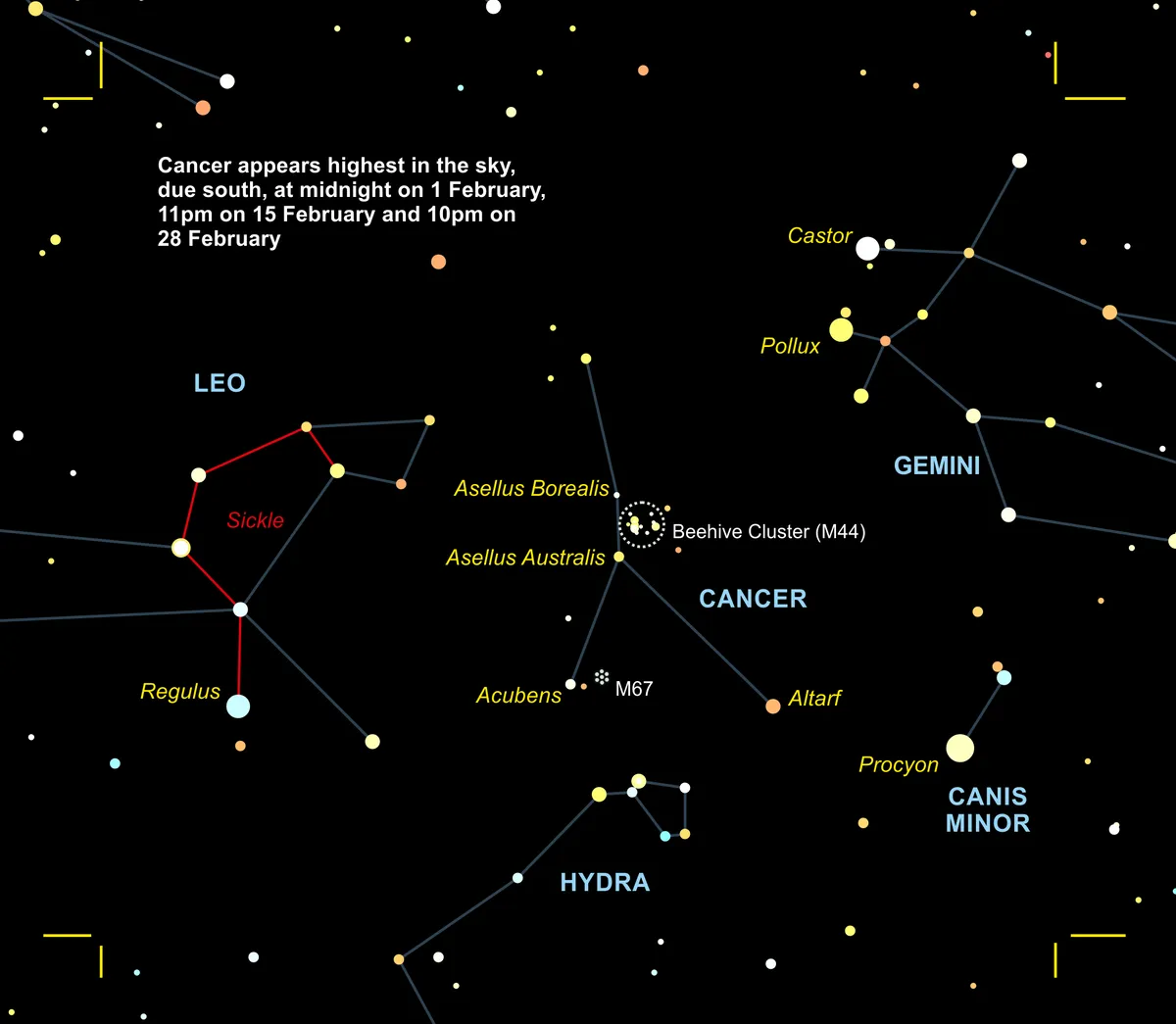The trick to locating faint constellations is to use the more recognisable ones as guides. This certainly helps with the faint constellation of Cancer the Crab, which can be seen in late winter. To find this heavenly crustacean you’ll need to identify the stars on either side of it.
Start from Orion, identifying the bright blue supergiant Rigel in the southwest corner. Extend a line from Rigel through red-supergiant Betelgeuse in the opposite corner. Keep the line going for twice the distance to bring you to Castor and Pollux. These are the two bright stars in Gemini, Castor is the one to the north.

Next, locate the pattern of the Plough (or Saucepan) which is balancing on the end of its handle midway up the sky, above the northeast horizon before midnight. Extend the pan’s side nearest the handle, towards the right until you arrive at the bright star Regulus in Leo. Above Regulus is a backwards question mark star pattern known as the Sickle.
Under a clear, dark sky look for a mistiness slightly below the mid-point of an imaginary line connecting Castor to Regulus. This is the Beehive Cluster, M44, an open cluster located at the heart of Cancer. Binoculars show it well.

An alternative name for M44 is Praesepe, meaning ‘manger’. It sits within a box formed from four dim stars, the brighter two to the east being known as Asellus Borealis and Asellus Australis: the Northern Donkey and Southern Donkey.
The rest of Cancer resembles an inverted-Y, none of its stars are particularly bright. The open end of the Y lies south of M44, marked by Acubens to the southeast and Altarf to the southwest. Using binoculars or a small telescope, the open cluster M67 can be seen slightly west of Acubens. This appears dimmer and smaller than M44 because it’s much farther away; nearly 3,000 light-years for M67 compared to 610 light-years for M44.
Read more:
- Astronomy for beginners: A complete guide for UK stargazing
- How can I see the Pleiades star cluster?
- How can I see the Winter Triangle?
- How can I spot the International Space Station?
To submit your questions email us at questions@sciencefocus.com (don't forget to include your name and location)
- This article first appeared inissue 373ofBBC Science Focus Magazine–find out how to subscribe here